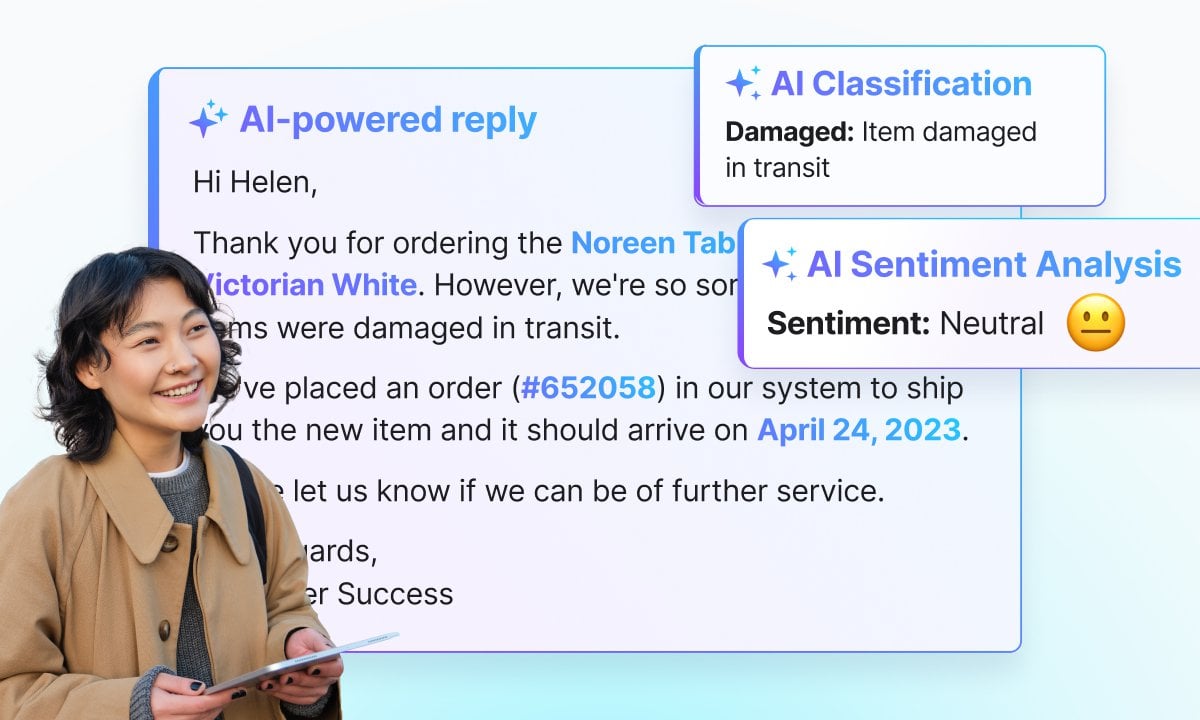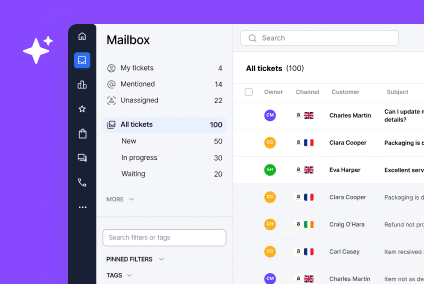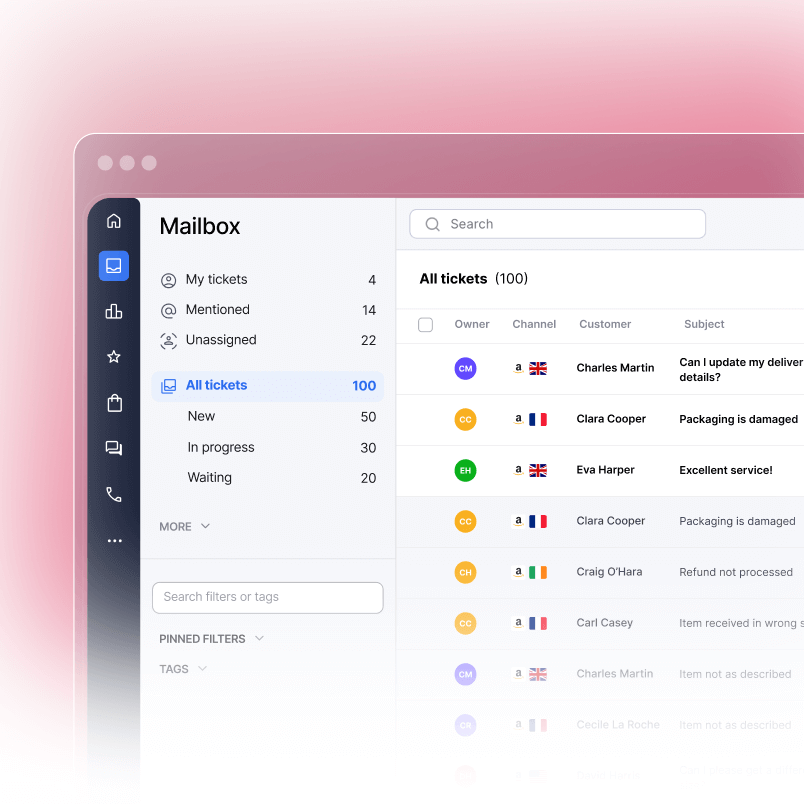When it comes to making more sales and creating a brand customers love, eCommerce personalization is your key to success. However, individualizing every aspect of your online shopping experience may seem daunting.
Luckily, we’re here to make it a lot easier. In this article, we’ll explore why eCommerce personalization is so important. Along the way, we’ll also discuss ways you can personalize the customer experience for your shoppers. Let’s get started…
What is eCommerce personalization?
eCommerce personalization is exactly what it sounds like: the act of individualizing the customer experience so that it’s unique to each shopper.
When you receive an email from a brand that contains your first name or thanks you for ordering a specific product, that communication has likely been personalized. Likewise, when you’re shopping online and see item recommendations based on your previous browsing history, the shopping experience has been personalized.
Why is eCommerce personalization important?
Simply put, a personalized experience leads to higher sales, more loyal customers, and increased profits for online businesses. Here are a few statistics showing the benefits of eCommerce personalization.
Personalization leads to more sales
A recent study by Epsilon indicates that a whopping 80% of respondents are more likely to purchase from brands that offer personalized experiences. Data compiled by Instapage also shows that 71% of consumers report frustration over an impersonal shopping experience. The same statistics show that marketers report an average increase of 20% in sales when using personalization.
Personalized Email Stats
The Instapage data also shows that personalized emails deliver six-times higher transaction rates. Some brands have even reported an eight-fold increase in click-through rates thanks to personalization.
That said, a massive number of brands are missing out on eCommerce personalization, with 70% of businesses failing to use personalized email strategies. This is a mistake, as 52% of shoppers say they will change brands when emails aren’t personalized. However, you can take advantage of an incredible opportunity to delight and engage your shoppers with personalization, while other businesses lag behind!
Personalized Offers and Discounts
A great way to customize the online shopping experience is to send personalized offers and discounts.
Instapage reports that 79% of shoppers say they will only engage with an offer if it has been personalized to reflect previous shopping history. The majority of consumers (63% of Millennials, 58% of Gen Xers, and 46% of Baby Boomers) even say they’re more willing to share personal information with brands that send personalized discounts or offers.
How to apply eCommerce personalization in your business
We could go on and on with these statistics, but one thing is clear: eCommerce personalization leads to more sales and better growth for your business. So, how do you apply personalization throughout the customer journey?
Let’s look at a few ways to provide a personalized shopping experience.
Collect customer data to customize the shopping experience
eCommerce personalization starts with collecting the right customer data. After all, you can’t customize communications or product recommendations if you don’t have the customer’s information or browsing history.
When it comes to post-purchase or email subscriber communications, this part is pretty easy. That’s because if a customer has subscribed to your email list or bought a product from your online store, they’ve likely provided you with their name and other information. Plus, you can see the products they’ve purchased, their order number, and other details thanks to any completed transactions.
However, if you want to monitor website activity such as items viewed, you’ll need to track eCommerce site browsing behavior. Luckily, there are a number of software and analytics programs available that can help you track everything from real-time on-site activity to historical behavior. Today, many of these programs even use machine learning and AI in order to provide more intelligent insights than ever before.
Individualized Product Recommendations
One of the best ways to encourage more purchases from your brand is to provide individualized product recommendations. eCommerce brands can do this in a number of ways.
The most obvious and familiar way to recommend similar products to ones your shoppers have already looked at is to include a section on your eCommerce website with a header like, “More products we think you’d love.”
You can also include these recommendations in pop ups on your website. However, you’ll want to set them at increments that won’t annoy your shoppers. You can even have a pop up or section that appears when a shopper is getting ready to check out that contains recommended items to add to their cart.
Finally, you can email subscribers with personalized product recommendations based on their browsing or previous purchase history.
Customized Offers and Discounts
As the stats we covered show, customized offers and discounts are highly appreciated by today’s consumers. Delight your shoppers and encourage brand loyalty by offering promotions that make them feel valued by your company.
For example, you can set a pop up to appear for first-time site visitors offering a 10% or 20% discount on their first order. Similarly, you can send thank-you emails containing exclusive discounts or offers to shoppers who have made a purchase.
Additional ways to deliver personalized offers is to send customers discount codes for their birthdays, email list signup anniversaries, or other special occasions. You can even encourage customer engagement by regularly providing special offers to your social media followers or rewarding other types of brand loyalty.
Personalized Customer Service
Finally, no eCommerce personalization strategy is complete without individualizing your customer service. Thankfully, this is also one of the easiest aspects of your business to personalize, thanks to eDesk’s AI-powered help desk.
With eDesk, you can see all customer information right alongside the support ticket. This includes customer names, order numbers, tracking numbers, and the like.
Even if you use our time-saving templates or AI-powered HandsFree auto-responders, messages are personalized to include individualized details, like customer first name and order info. This way, shoppers always feel like they are more than just another number.
Our automatic translation feature can even help you engage in seamless and personalized communication with customers from other countries and cultures. Plus, with a centralized dashboard, you can see the messages from all your marketplaces and selling channels in one well-organized inbox. This enables you to provide lightning-fast personalized service, while expending far less effort to do so.
eCommerce Personalization: Final Thoughts
eCommerce personalization is the key to making more sales, increasing company profits, and improving customer loyalty and satisfaction. As the statistics show, shoppers are far more likely to buy from you if you offer a personalized experience (and to switch brands if you don’t).
By collecting the right data, offering custom product recommendations at key points in the buyer journey, delivering special offers and discounts, and personalizing your customer support, you can take your brand to the next level.
Ready to centralize and personalize your customer service? Try eDesk for free today!




